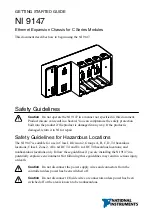
Appendix A: Additional Guidelines and Equipment Details
66
Dell EMC PowerEdge MX
Networking Architecture Guide
By default, OS10EE uses Rapid per-VLAN Spanning Tree Plus (RPVST+) across all
switching platforms including PowerEdge MX networking IOMs. OS10EE also supports
Rapid Spanning Tree protocol (RSTP) and Multiple Spanning Tree (MST).
Exercise caution when connecting a RPVST+ to an existing RSTP environment. RPVST+
creates a single topology per VLAN with the default VLAN, by default VLAN 1, being used
for the Common Spanning Tree (CST) with RSTP.
For non-native VLANs, all Bridge Protocol Data Unit (BPDU) traffic is tagged and
forwarded by the upstream, RSTP-enable switch, with the associated VLAN. These
BPDUs are sent to a protocol-specific multicast address. Any other RPVST+ tree that is
attached to the RSTP tree processes these packets accordingly leading to the potential of
unexpected trees.
Note:
Dell EMC Networking recommends, that when connecting to an existing environment that is
not using RPVST+, to change to the existing STP protocol before connecting a OS10EE switch.
In the following example, RSTP is enabled globally on an MX9116n FSE, with a similar
MST configuration:
MX9116n-FSE(config)# spanning-tree mode rstp
MX9116n-FSE(config)# end
MX9116n-FSE#show spanning-tree brief
Spanning tree enabled protocol rstp with force-version rstp
Executing IEEE compatible Spanning Tree Protocol Root ID Priority 0, Address
4c76.25e8.f2c0 Root Bridge hello time 2, max age 20, forward delay 15 Bridge ID
Priority 32768, Address 2004.0f00.cd1e Configured hello time 2, max age 20, forward
delay 15 Flush Interval 200 centi-sec, Flush Invocations 95 Flush Indication
threshold 0 (MAC flush optimization is disabled)
<output truncated>
NIC teaming restrictions
While NIC teaming is not required, it is recommended for redundancy unless an
implementation recommends against it.
There are two main types of NIC teaming:
•
Switch dependent: Also seen as 802.3ad or Dynamic Link Aggregation. This
teaming method uses the LACP protocol.
•
Switch independent: This method uses the operating system and NIC device
drivers on the server to team the NICs. Each NIC vendor may provide slightly
different implementations.
































